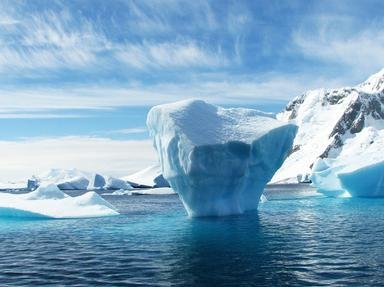Quiz Answer Key and Fun Facts
1. Nestled in the boreal forest of the Northwest Territories, this lake is the largest lake fully within Canada's borders, and the eighth largest lake in the world, by surface area. What is its name?
2. Named for whaling captain William Penny, the Penny Ice Cap is a 6,000 km2 glacier located within Auyuittuq National Park, which is on the same island as Iqaluit, the capital of the Canadian territory of Nunavut. Which island?
3. The Greenland ice sheet is vast, just over 1.7 million km2 in area, extending almost 2,900 km south to north and 1,100 km across at its widest point. Referred to in Danish as 'Grønlands indlandsis', what is the ice sheet called in Greenlandic?
4. The island of Grímsey intersects the Arctic Circle, making it the only part of this country, known for its active volcanoes and geysers, to do so. Which country?
5. Established in 2008, the Global Seed Vault is a repository of more than a million distinct crop samples, protected on the island of Spitsbergen in which Norwegian archipelago in the Arctic Ocean?
6. Every winter since 1989, an ice hotel has been constructed in the Swedish town of Jukkasjäarvi, created from blocks of ice cut from which river, that forms a 200 km stretch of the border between Sweden and Finland?
7. Straddling the Arctic Circle near Rovaniemi, Finland, this amusement park and themed village is the "official home of Santa Claus," 365 days a year (even Christmas day!). In which Finnish county, the largest and northernmost, does Santa live?
8. The Alyosha Monument was erected in 1974 "To the Defenders of the Soviet Arctic during the Great Patriotic War" (WWII). In which port city, the world's largest city north of the Arctic Circle, is it located?
9. The closest Russian island to the North Pole is Rudolf Island, part of the uninhabited archipelago named 'Franz Josef Land' between the Kara and Barents Seas. Which expedition discovered and named the archipelago?
10. Point Barrow, Alaska marks the northernmost point of the United States, but it also marks the division between which two marginal seas of the Arctic Ocean?
Source: Author
reedy
This quiz was reviewed by FunTrivia editor
agony before going online.
Any errors found in FunTrivia content are routinely corrected through our feedback system.
